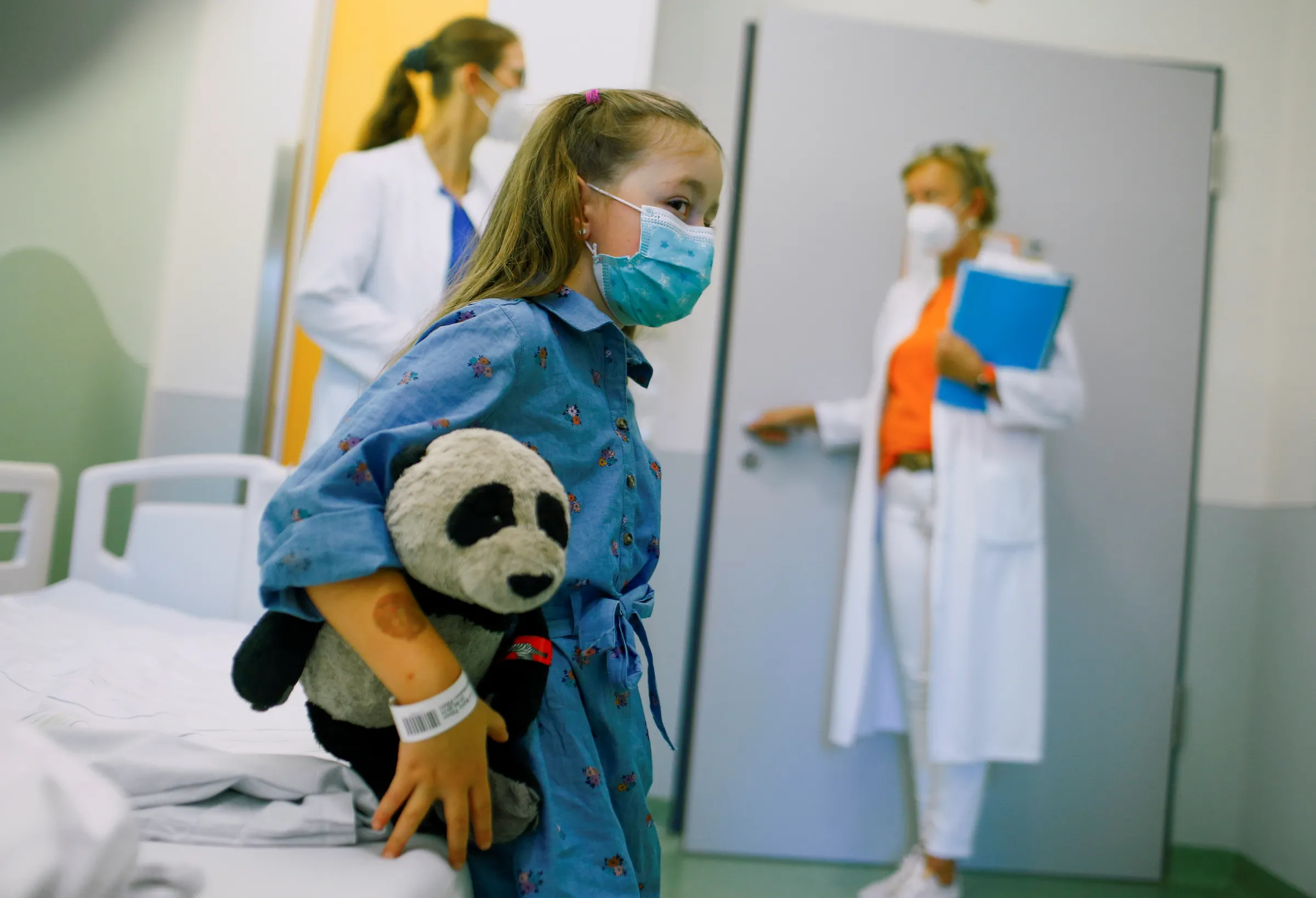Long COVID cost Germany 32 bln Euros last year – why we must act now

A five-year-old girl suffering from COVID-19 long term side effects, sits in a treatment room of the children's hospital Universitaets-Kinderklinik, in Bochum, Germany, September 8, 2021. REUTERS/Thilo Schmuelgen
Long COVID is costing billions of dollars in lost productivity and increased health and welfare costs so why is there so little funding for research?
Jörg Heydecke, Founder and Managing Director, ME/CFS Research Foundation, which campaigns for research into Long COVID and Myalgic Encephalomyelitis/Chronic Fatigue Syndrome.
Only a few months into the COVID-19 pandemic, medical experts started ringing alarm bells about a potential wave of chronic illnesses resulting from infections.
Five years on and some estimates suggest 65 million people globally could be living with Long COVID. This highly debilitating condition remains poorly understood, but emerging research suggests it is taking a huge toll on society and the economy.
Our study - the first of its kind in Germany - shows that Long COVID has so far probably cost the country a staggering 125.6 billion Euros ($142 billion).
And with COVID still circulating, that figure is set to keep rising.
This is not just an issue for Germany. A small but growing number of studies in other countries show that our findings are well in line with estimates elsewhere.
There are likely about 871,000 people living with Long COVID in Germany.
According to our analysis with Risklayer, a risk modelling firm, associated costs from spending on medical care, nursing care and social welfare payments, as well as from loss of work, lost tax revenues, productivity losses and lost purchasing power amounted to 32.2 billion Euros last year.
This equals 0.75% of Germany’s gross domestic product (GDP), illustrating the immense economic damage.
People living with Long COVID suffer from a myriad of symptoms, affecting multiple body systems. Severe malaise after minimal cognitive or physical exertion, debilitating fatigue, brain fog, pain and difficulty sleeping are typical.
These symptoms and many others make it extremely difficult, and often impossible, to work, continue with education or take part in social activities. The quality of life lost in children and younger people living with Long COVID is especially devastating to witness. Parents, siblings and friends often feel helpless and abandoned by the medical system.
Importantly, Long COVID shares many key similarities with myalgic encephalomyelitis/chronic fatigue syndrome (ME/CFS), another post-acute infection syndrome – and one that has been neglected for decades. Some Long COVID patients are eventually diagnosed with ME/CFS, which is often referred to as the most severe form of Long COVID.
The number living with ME/CFS in Germany rose from 400,000 before the pandemic to 650,000 in 2024, according to our analysis.
Looked at together, the combined cost of Long COVID and ME/CFS topped 63 billion Euros last year – equal to 1.5% of our GDP. This dramatic burden to society is set to remain at that level.
New waves of infections add to the growing pool of people with Long COVID and ME/CFS, while recovery rates remain low in the absence of any cures.
Both the high number of people impacted and the significant societal cost should be alarming to everyone, not least policy makers.
State and federal governments in Germany have provided some funds to research projects investigating the disease mechanisms and improving health care services. But the amounts allocated so far pale in comparison to the staggering cost of both conditions.
Research funding for Long COVID and ME/CFS remains disproportionately low compared with similarly burdensome diseases like Multiple Sclerosis or HIV/AIDS. At the same time, pharmaceutical companies remain largely reluctant to initiate urgently needed research and clinical trial programmes. Novel drug development for Long COVID and ME/CFS is virtually non-existent at this point.
With our report, we aim to provide an impetus for government and private actors alike to ramp up investments in biomedical research.
Biomarker development, improvement of diagnostics and fast-tracked implementation of clinical trials exploring potential drug treatments must be urgently prioritised. Not only in Germany, but across the globe. Millions of people depend on it.
Any views expressed in this opinion piece are those of the author and not of Context or the Thomson Reuters Foundation.
Tags
- COVID-19
Go Deeper
Related
Latest on Context
- 1
- 2
- 3
- 4
- 5
- 6


















